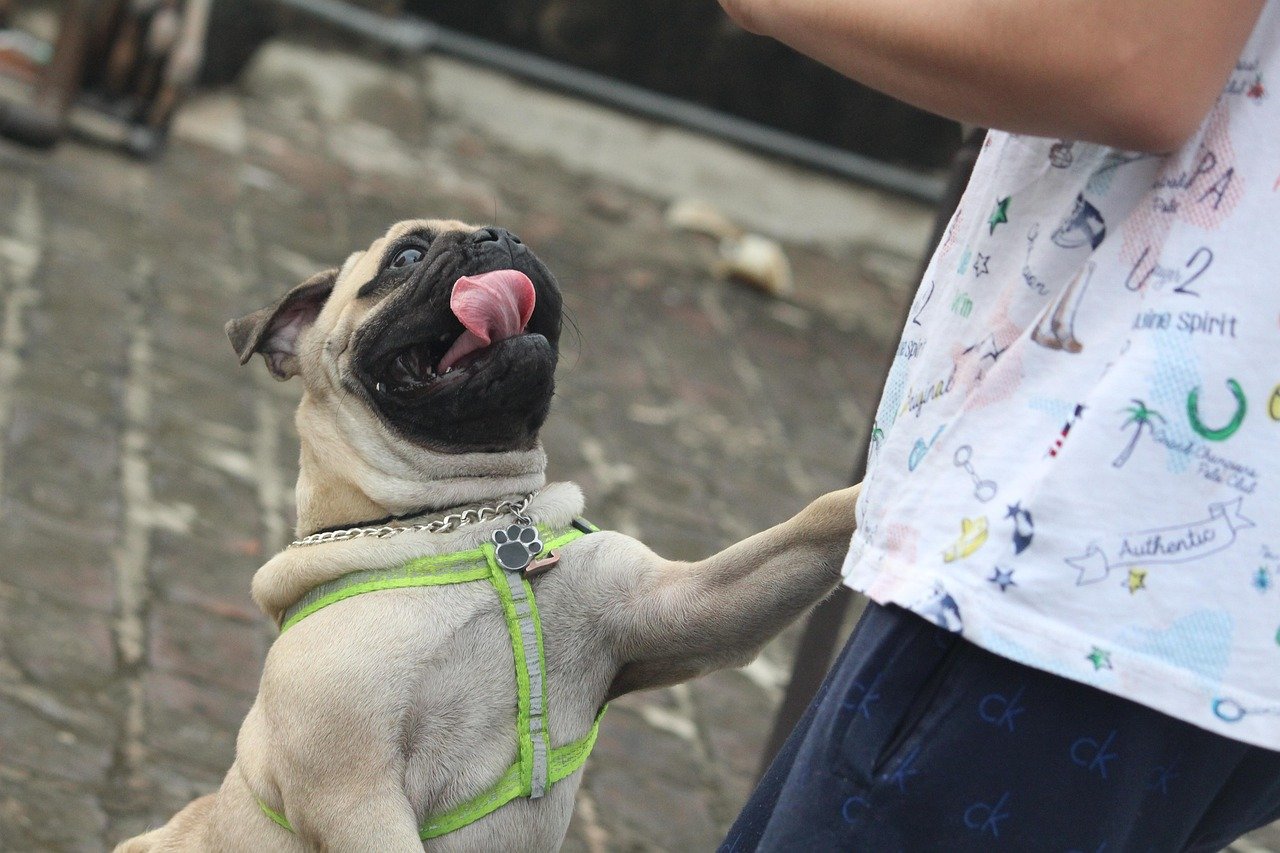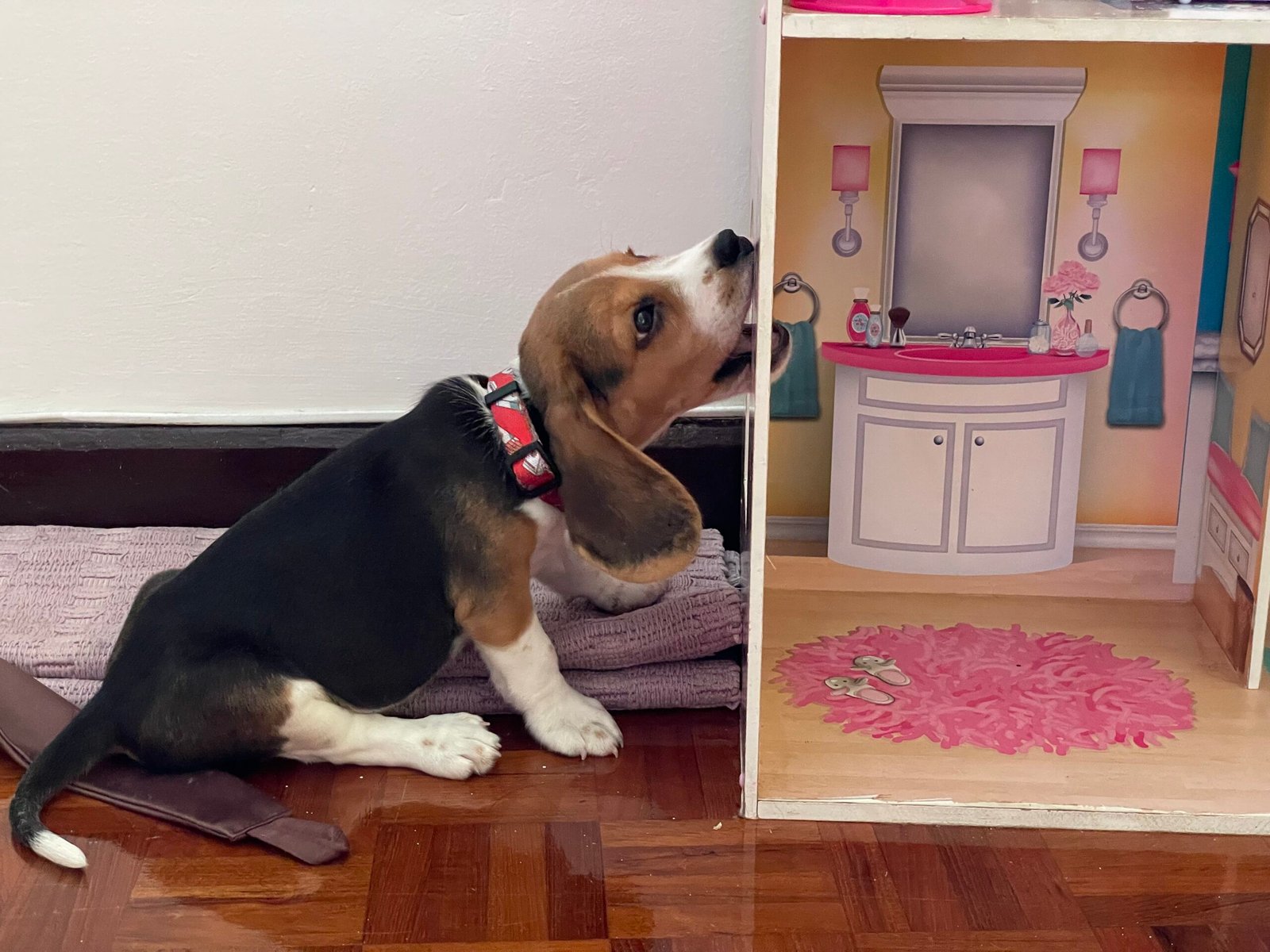Have you ever watched your dog do something absolutely adorable, only to later discover it’s not as harmless as it looks? As dog lovers, we can’t help but melt when our furry friends tilt their heads, jump up to greet us, or paw at our legs for attention. But what if some of these sweet gestures are actually warning signs of trouble ahead? It’s easy to miss the red flags when a wagging tail and big brown eyes are involved. Let’s dive into nine dog behaviors that seem cute, but could spell bigger problems if left unchecked. You might be surprised by what you learn—some of these could even be happening in your own living room right now!
Jumping Up to Greet You

We’ve all been there—laughing at our dog’s dramatic zoomies, melting when they paw at us for attention, or snapping a photo as they jump up to greet us. While these behaviors can seem adorable on the surface, some of them can signal deeper issues or lead to trouble down the line if left unchecked. Just like kids, dogs test boundaries, and what starts as “cute” can quickly become chaotic if not addressed.
It feels wonderful to be welcomed home by an excited pup leaping up to say hello. That joyful bounce can make your day, but it’s actually a behavior that can become a real problem. While it might seem cute with a tiny puppy, a full-grown dog jumping up can knock over children, elderly people, or even unsuspecting guests. Over time, this can turn into a safety issue, especially with larger breeds. Dogs jump because they want attention or are trying to get closer to your face, but it’s important to teach them calmer greetings. Left unaddressed, jumping up can also accidentally reinforce dominant or demanding behavior, teaching your dog that being pushy gets them what they want. Instead, encouraging your dog to sit calmly for greetings creates a safer and more polite environment for everyone.
Pawing at You for Attention
It’s hard to resist those pleading eyes and gentle paws on your leg. Dogs often paw at us when they want affection, treats, or playtime, and it can feel like the ultimate sign of love. However, if your dog is always pawing for attention, it can signal a deeper issue—like boredom, anxiety, or a lack of boundaries. This behavior can escalate if your dog learns that pawing always gets a reaction from you. Over time, what started as a sweet gesture can become annoying or even painful, especially with larger dogs or sharp claws. It’s crucial to teach your dog that calm, patient behavior earns rewards, not persistent pawing. Setting boundaries helps your dog feel secure and understand the rules of your home.
Leaning or Sitting on Your Feet
When your dog leans against you or sits on your feet, it can feel like a loving hug. Many dog owners interpret this as a sign of affection or loyalty. But sometimes, this behavior is about more than just love—it can actually signal possessiveness or insecurity. Dogs that constantly lean or sit on people might be trying to control access to their owners, especially if they do it around other people or animals. This behavior can lead to issues with resource guarding, jealousy, or anxiety when you’re not around. While occasional leaning isn’t usually a cause for concern, consistent or overly clingy behavior is something to watch for. Encouraging independence and providing your dog with their own safe space can help balance out this neediness.
Growling During Play
A playful growl might sound silly or harmless when your dog is wrestling with a toy or another dog. Many owners even laugh it off, thinking it’s just part of the fun. However, it can be tricky to tell the difference between playful and warning growls. If your dog starts to growl more intensely during play, or if their body language becomes stiff or aggressive, this can signal trouble. Over time, play growling can escalate into real aggression, especially if it’s not managed properly. It’s important to monitor your dog’s play and intervene if things get too rough. Teaching your dog to have good manners during playtime ensures everyone’s safety and helps prevent future behavioral problems.
Excessive Licking
There’s something undeniably sweet about a dog who covers you in kisses. But excessive licking isn’t always just a sign of love—it can be a sign of stress, anxiety, or even an underlying health issue. Dogs may lick their owners, themselves, or objects obsessively when they’re feeling nervous or bored. This behavior can also lead to skin irritation or infections, both for you and your pup. If your dog is constantly licking, it could be their way of coping with uncomfortable feelings or a sign that they’re seeking comfort. Addressing the root cause—whether it’s anxiety, boredom, or a medical problem—is key to stopping excessive licking before it becomes a bigger issue.
Barking for Attention
A dog that barks when you walk in the door or picks up a leash can be endearing at first. It might even feel like your dog is “talking” to you. But when barking becomes a way for your dog to demand attention, it can quickly get out of hand. Attention-seeking barking can disturb your family, bother neighbors, and make it hard to enjoy peaceful moments at home. Dogs learn quickly that barking gets them what they want if you always respond. Over time, this can develop into a habit that’s hard to break. Ignoring attention-seeking barking and rewarding calm behavior helps teach your dog that silence is golden.
Begging at the Table
Those big, soulful eyes watching you at dinner time can be almost impossible to resist. Some owners even find it cute when their dog begs or does tricks for food at the table. However, giving in to begging can set a dangerous precedent. It teaches your dog that persistence pays off and can lead to overeating, obesity, or digestive issues. Begging can also disrupt family meals and confuse your dog about what’s allowed. Setting clear rules about when and where your dog can eat—and sticking to them—will help curb this problematic behavior and keep your dog healthier in the long run.
Chewing on Personal Items

A puppy chewing on a shoe or sock might look adorable, but it’s a habit that can quickly spiral out of control. Chewing on personal items can be a sign of boredom, anxiety, or lack of proper outlets for energy. While young dogs often chew as part of teething, older dogs that continue this behavior may be signaling stress or a need for more mental stimulation. Chewing on inappropriate items can also be dangerous if your dog swallows something harmful. Providing plenty of safe, dog-friendly chew toys and keeping personal items out of reach can help redirect this behavior before it becomes destructive.
Sleeping in Your Bed Every Night
There’s nothing cozier than snuggling up with your furry friend at bedtime. Many people find comfort in letting their dogs share the bed, but this seemingly harmless habit can sometimes lead to problems. Dogs that always sleep in your bed may become overly dependent or territorial about the space. This can make it difficult for them to sleep alone or cause resource guarding issues if they don’t want to share the bed with other people or pets. Additionally, if your dog struggles with separation anxiety, sleeping together every night can make it harder for them to cope when you’re away. Teaching your dog to sleep in their own bed or crate can help foster independence and healthier boundaries.

Andrew Alpin from India is the Brand Manager of Doggo digest. Andrew is an experienced content specialist and social media manager with a passion for writing. His forte includes health and wellness, Travel, Animals, and Nature. A nature nomad, Andrew is obsessed with mountains and loves high-altitude trekking. He has been on several Himalayan treks in India including the Everest Base Camp in Nepal.





